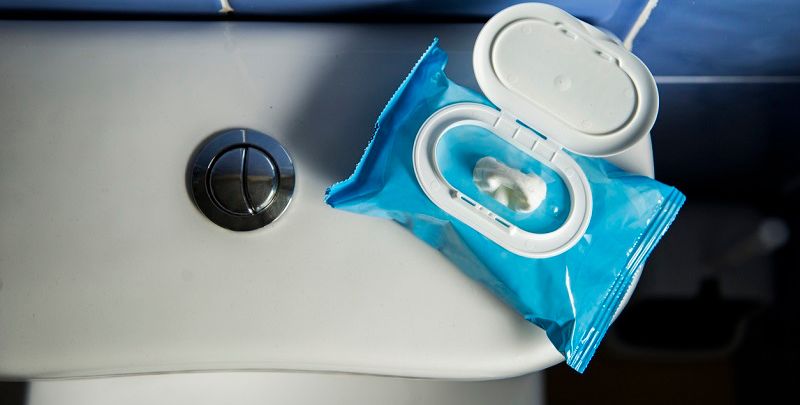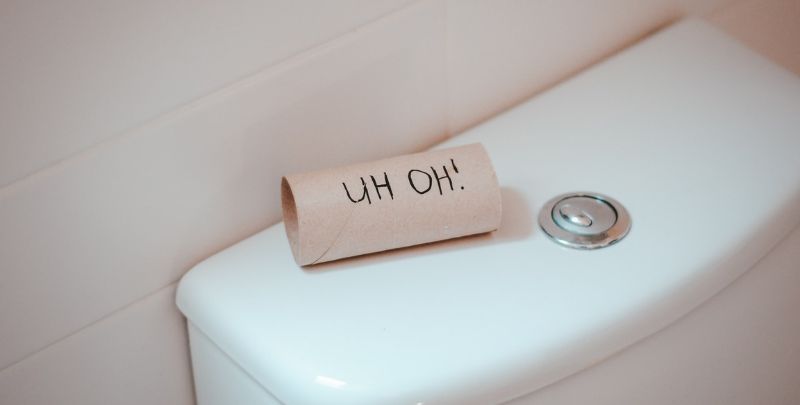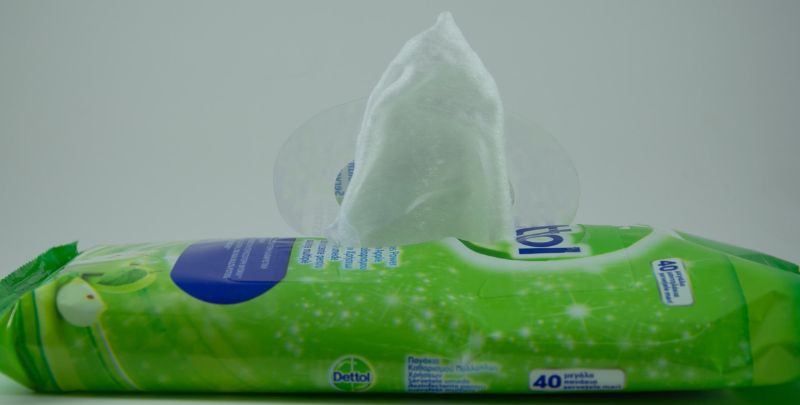
The Rise of Flushable Wipes
The last two-and-a-half years have seen many of us make more considered and considerate choices about personal hygiene. The arrival of COVID-19 in Australia in early 2020 saw a likely increase in sales of baby wipes and flushable wet wipes that could be attributed to three key factors:
- Toilet paper shortages brought about by sudden panic buying
- The push to reduce risk of Coronavirus transmission through increased hygiene practices, and
- The simple practical need to have a greater supply at home for babies and toddlers with the closure of many child care centres at the time
Disposing of used flushable wipes was seemingly a no-brainer – the packaging said “flushable” after all – but the issue of whether they actually can and should be flushed has been under debate for many years, even pre-COVID-19.
It’s a question that may not have a straight yes-or-no answer, and an issue that continues to evolve. So let’s take a further look at the “flushability” of flushable toilet wipes.
What Happens When You Flush a Wipe Down the Loo?
Toilet paper typically takes a couple of minutes at most to completely break down once it has been flushed. What about flushable toilet wipes? Well, they’re not quite as efficient.
They can take days and even weeks to degrade, if at all. Many simply end up causing or adding to existing blockages in the pipes.
They form a part of what is called a fatberg, which is a hardened mass of fats, oils, hair and other insoluble materials that should not be flushed or disposed of in a drain such as sanitary products, paper towels and wet wipes.
In a Choice Magazine article, they refer to information provided by Sydney Water which states that wet wipes are involved in about 75% of sewer blockages.
SA Water experienced a 20% to 60% increase in blockages at the height of the COVID-19 pandemic due to people flushing items and materials that were unable to break down or flush away.
Aside from creating potential hassles for the sewerage system, these wet wipes that accumulate in your pipes can also cause problems for the plumbing in your home.
The blockages can result in messy and potentially costly overflows throughout the house; overflows that can easily be avoided.

Why Don’t Flushable Toilet Wipes Flush?
Unlike toilet paper, which is manufactured to break down quickly and easily once it hits water, wipes have been designed to be durable and are therefore manufactured with different materials than toilet paper to achieve that durability.
Many wipe products contain synthetic polymers and other plastic materials that provide that needed strength, but at the same time don’t break down in the same way that dry toilet paper does.
So, Why Do We Keep Flushing These Seemingly Unflushable Items?
A Choice Magazine survey from 2016 found that 73% of respondents believed that a product labelled as flushable could be flushed in the same way as toilet paper without causing blockages.
As it happens, up until recently there had been no regulated definition of the term “flushable”, and as such manufacturers would set their own criteria to determine flushability.
This created a disconnect between manufacturers who were claiming their products could be safely flushed, and plumbers and sewage treatment plant operators who saw first-hand that home plumbing and sewerage pipes could be clogged with flushable wipes and, in fact, did not flush at all.
The debate came to a head in late 2016 when the ACCC announced it would be taking manufacturer Kimberly-Clark Australia to court over its claims that their toilet wipes would flush as safely and break down as easily as toilet paper.
In 2019, the court dismissed the consumer body’s case around the flushability of the manufacturer’s flushable wipes on the grounds of insufficient evidence.
They did, however, find in favour of the ACCC’s claim that the manufacturer had misled consumers about where its moist wipes were manufactured and fined Kimberly-Clark Australia to the tune of $200,000.

New National Flushability Standards Introduced
In May 2022, Standards Australia published a set of criteria that has helped to set a standardised, industry-wide, national definition of the term “flushable”.
The intent behind the development and publication of AS/NZS 5328 Flushable Products, was to get the manufacturers on the same page as to the standards that determined whether a product could be marketed as “flushable”.
This, in turn, would help to reduce the volume of blockages in the home as well as the nation’s sewerage systems. As Roland Terry-Lloyd, Head of Engagement at Standards Australia, stated: “This standard will hopefully help mitigate the risk of blockages as it will provide clarity to both manufacturers and consumers on what can be flushed.”
AS/NZS 5328:2022 is expected to be implemented over the next six months, with a newly created logo appearing on products that meet the criteria for being marketed as flushable.
Complying with the updated standards will be voluntary (though presumably highly beneficial) for manufacturers, while for consumers it will provide them with the ability to make more informed choices.
In The Meantime …
While we await the rollout of the new national flushability standard, the best way to dispose of flushable toilet wipes, baby wipes, and any other materials that perhaps shouldn’t be flushed down the loo is to simply put them in the bin.
Best for your home’s plumbing, best for the environment, best for everyone. If you have flushable wet wipes that are labelled as biodegradable, they are made from natural products and may therefore be able to be composted.
We’d still recommend not flushing them down the toilet; at least not until there is clarity on whether they meet the new criteria for “flushable”.
While these so-called flushable toilet wipes, such as Kleenex flushable wipes, might be good for sensitive skin, they’re not so good for ocean healthcare.
So, in the meantime, limit what you flush down the toilet to the three Ps – pee, poo and paper (of the toilet variety, not towel – so TP not PT) – and everyone will benefit. And if you do experience a blockage in the toilet that cannot be resolved with a simple plunger, get in touch with Mr Emergency – the experts in urgent plumbing repairs and maintenance services.
Please note: This information is provided for advice purposes only. Regulations differ from state to state, so please consult your local authorities or an industry professional before proceeding with any work. See our Terms & Conditions here.


